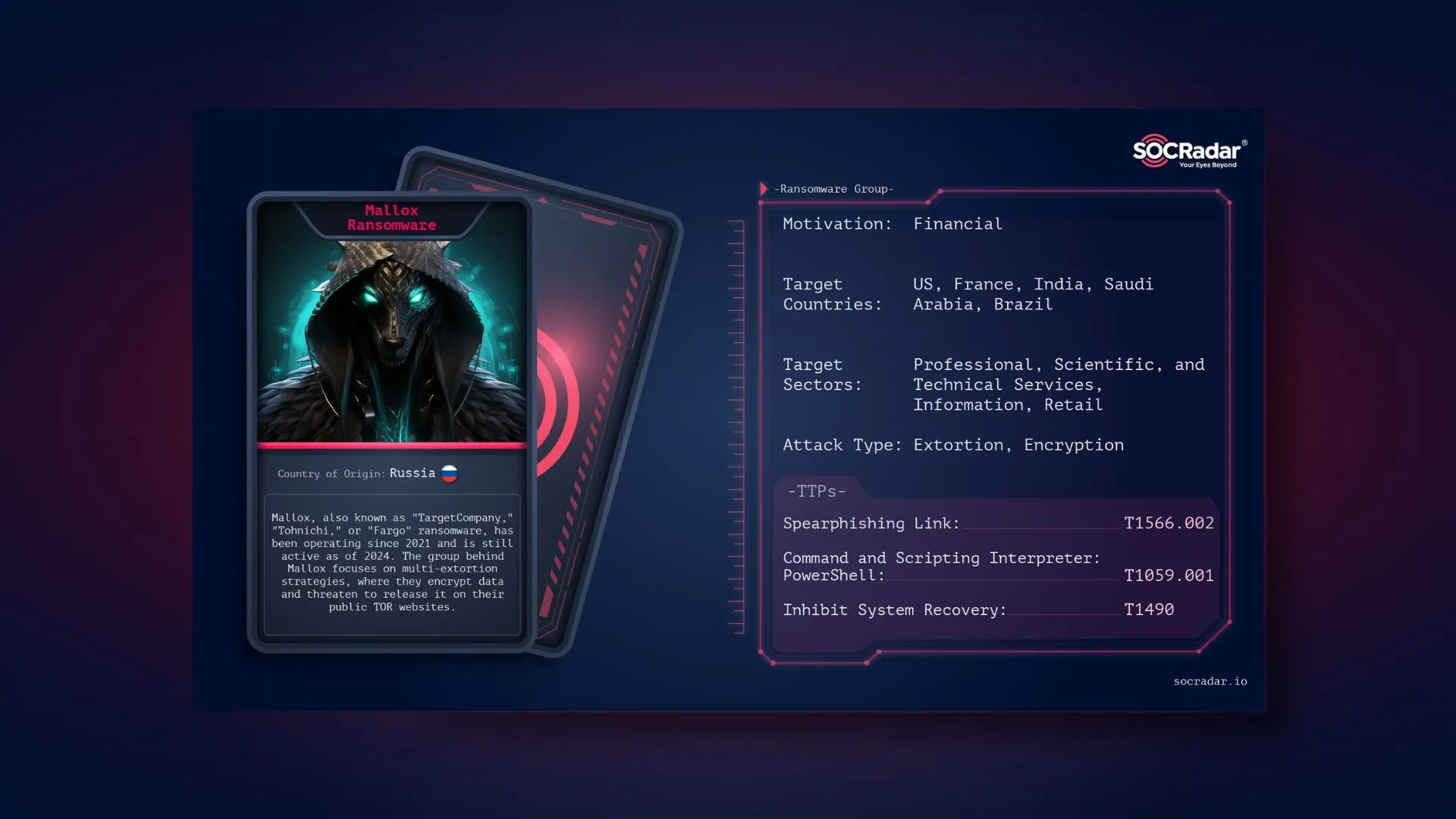
Threat intelligence enriched with External Attack Surface Management, Brand Protection, and Dark Web Radar.
Protect your business from the dangers lurking in the hidden corners of the internet.
Effective threat hunting and threat actor tracking with behavioral analytics.
Discover your assets with a hacker mindset.
Stay ahead of threat actors with actionable intelligence alerts.
Evaluate the security posture of your entire supply network.
Your guide in harnessing the full potential of our platform.
Hear SOCRadar’s impressive achievements from our clients.
Automate and operationalize your security operations.
Consulting and professional services for cybersecurity excellence.
Industry, sector, and region-based in-depth research.
Discover the heartbeat of cyberspace through a collection showcasing the latest incidents.
Discover how XTI empowers organizations to proactively identify, mitigate, and respond to evolving cyber threats.
Register for our live webinars, and watch our on-demand webinars instantly.
Dive deep into the world of cyber threats, advanced analysis techniques, and cutting-edge strategies.
Stay informed and up-to-date on the latest cybersecurity trends.
Explore SOCRadar’s learning experience to fuel your cybersecurity journey with insights that exceed industry standards.
We offer expert-led, and exclusive trainings to help you master the latest in cybersecurity, trusted by over 2,000 top companies.
Scan the dark web to prevent your leaks from turning into real risks.
Instantly access dark web findings about your organization’s assets.
Check if there is anything about you in SOCRadar’s ever-expanding breach database.
Track threat actors and groups by country or industry for effective follow-up.
Explore threat actors’ tactics, techniques, activities, and detailed profiles targeting your industry or region.
All-in-one next-generation tools for investigating everyday events like phishing, malware, account breach, etc.
Power your search with SOCRadar’s IOC Radar.
Let’s get to know each other better.
Broaden your market reach and increase ARR with SOCRadar Extended Threat Intelligence.
Get informed of our upcoming events.
Latest news about our platform, company, and what’s being said about us.
Begin an extraordinary journey in your professional path with SOCRadar.
We’d like to hear from you.
SOCRadar Training Series – Mastering AI in Cybersecurity From Theory to Practice
Resources
Mallox, a strain of ransomware and a group with the same name, encrypts its victims’ data and subsequently demands a ransom, typically in cryptocurrency, in return for providing the decryption key, just as a usual ransomware operator. However, this ransomware exhibited more destructiveness than many other ransomware variants in some cases. The Mallox ransomware strain and the group behind it, has been operational since around mid-2021 and is still active as of 2024.
Mallox is also called “TargetCompany,” “Tohnichi,” or “Fargo” ransomware and has been active since 2021. The group behind Mallox specializes in multi-extortion tactics, encrypting victim data and issuing threats to publish it on their public TOR-based websites.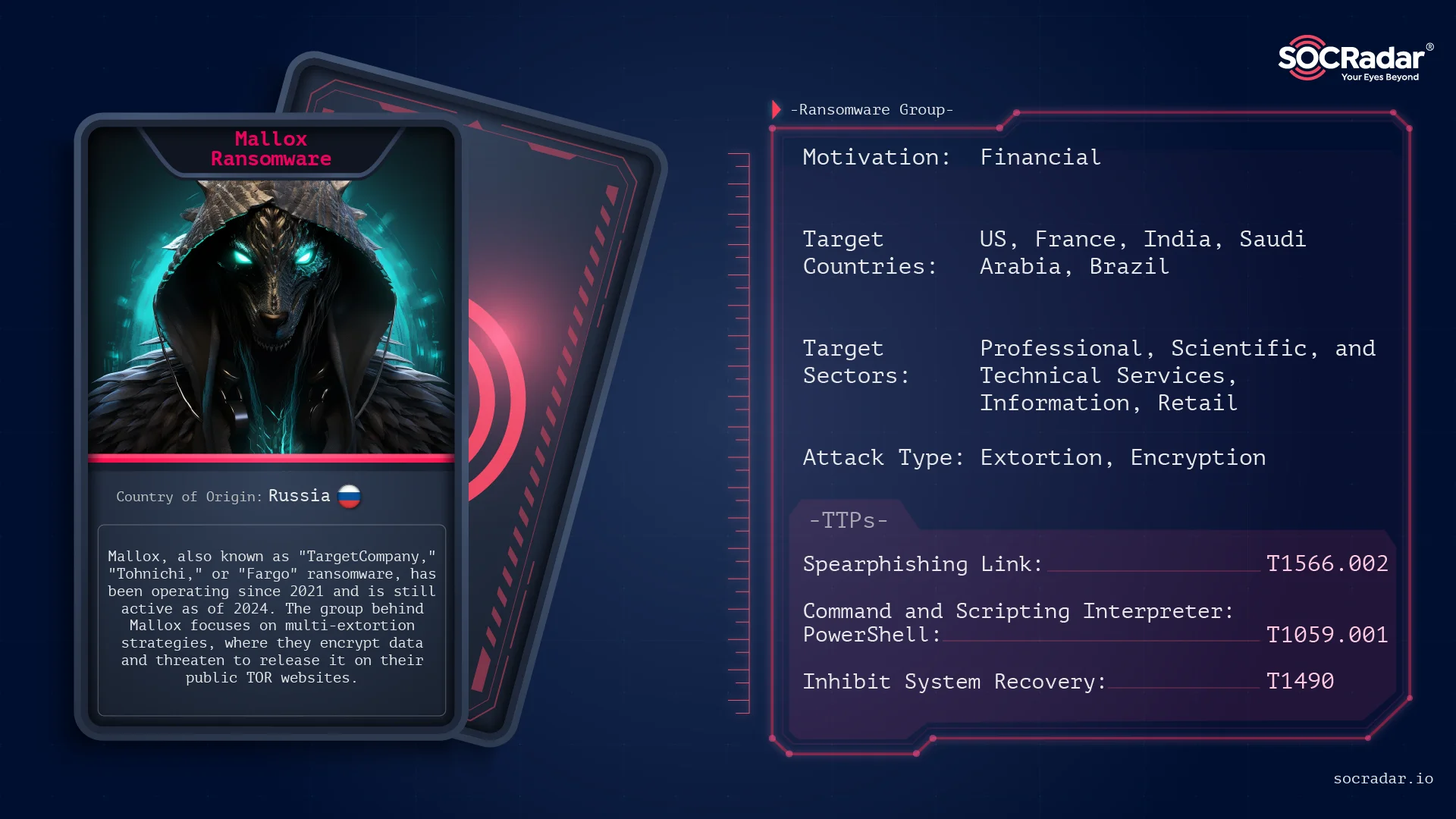
Threat actor card of Mallox Ransomware
According to SuspectFile’s interview blog with this ransomware group, Mallox stands out as one of the longest-running ransomware groups that remain active today (The interview was in the first month of 2023 and they are still active). The first encounter with its file samples dates back to June 2021, during which industry analysts initially labeled it as “TargetCompany ransomware.”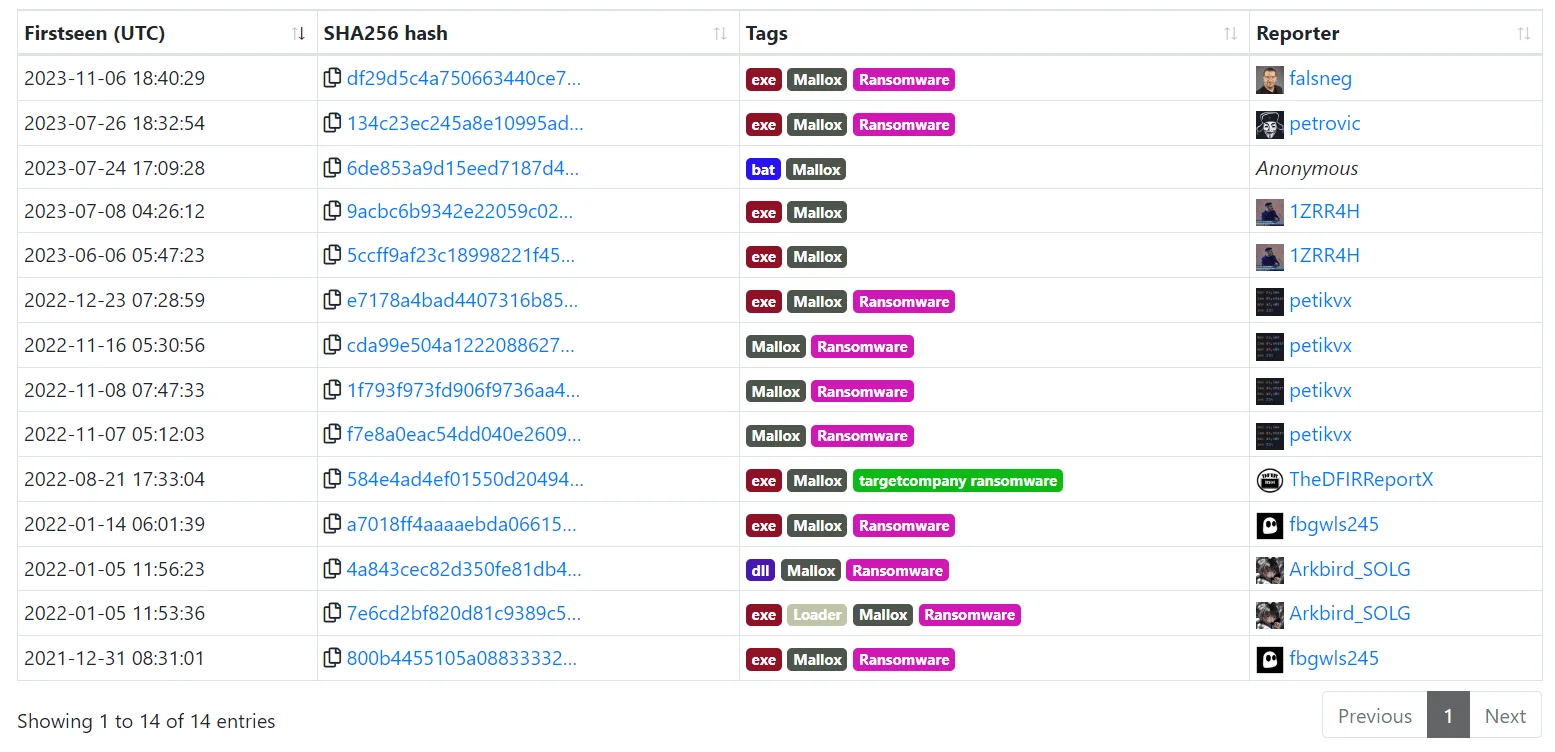
Uploaded samples of Mallox to Malwarebazaar over the years
A year later, around mid to late 2022, the group gained the name Fargo due to an extension added to encrypted files. Presently, it is identified as Mallox ransomware. During 2022, researchers recorded a surge in Mallox samples.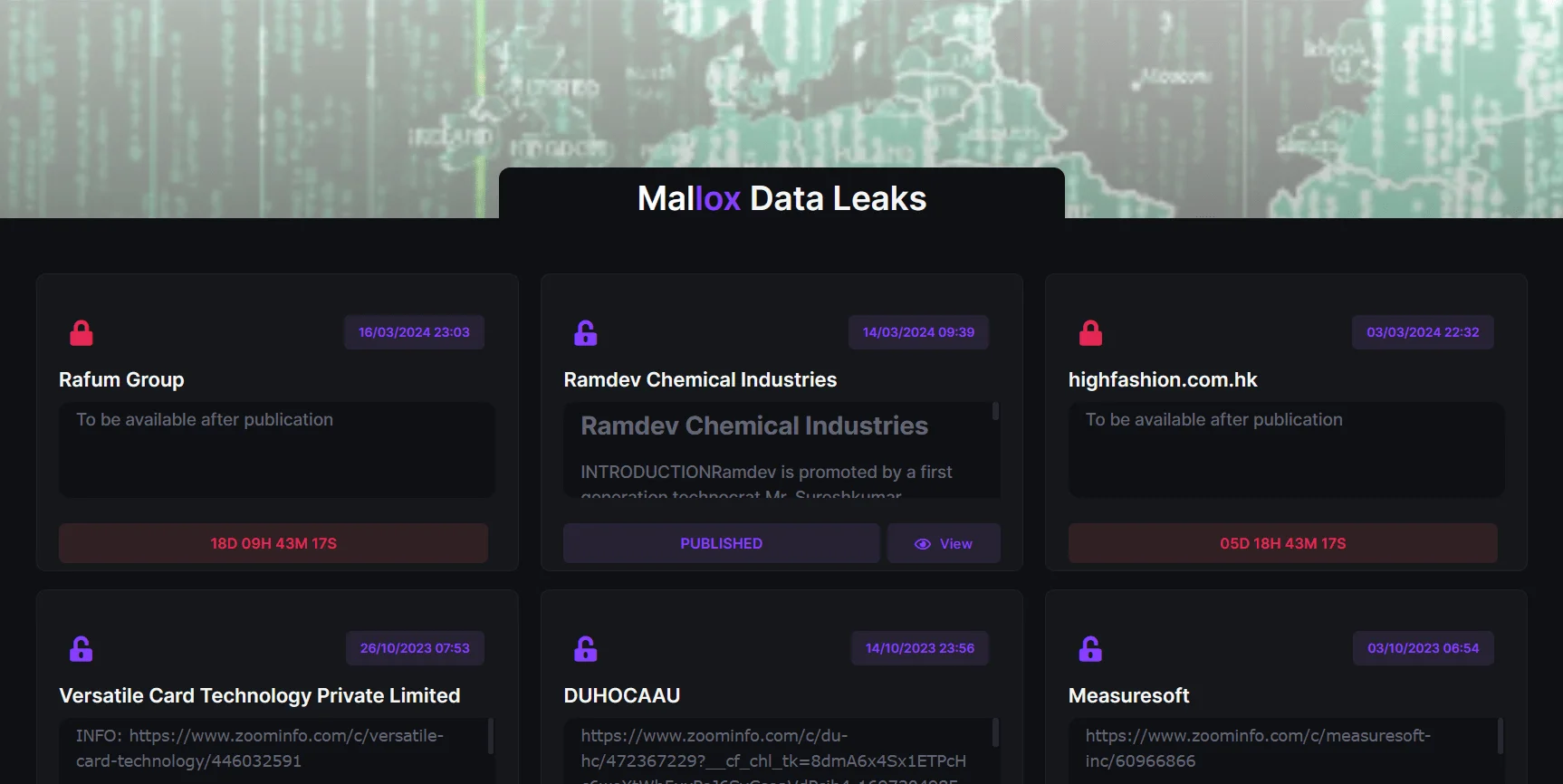
Mallox website is named as Mallox Data Leaks
While the successful operations of law enforcement agencies and counter ransomware initiatives continued to crack down on ransomware groups, many groups focused only on data leak and extortion. Mallox named their website as Mallox Data Leak on its home page. One question that comes to mind is, do they only do extortion anymore?
However, Mallox strains continue to appear around, and some companies have already been attacked with Mallox strains in 2024. Therefore for Mallox its not possible to say that they are now just an extortion group.
Initial Access Strategies:
Mallox Ransomware employs various techniques to gain initial access to target systems. This includes:
Persistence Mechanisms:
Once initial access is gained, Mallox ensures persistence on the compromised systems through various methods:
With PowerShell Mallox creates files in the recycle bin to hide itself (JoeSandbox)
Privilege Escalation Techniques:
Mallox employs privilege escalation tactics to elevate its access privileges within the compromised network:
Network Enumeration and Reconnaissance:
Before moving laterally within the network, Mallox conducts thorough network enumeration and reconnaissance:
Whenever possible, it communicates with the C2 server to transfer commands and files. (Any.run report)
Lateral Movement Strategies:
Once familiar with the network, Mallox initiates lateral movement to expand its reach and compromise additional systems:
Data Exfiltration Techniques:
Mallox Ransomware often includes data exfiltration as part of its operation to maximize the impact of the attack:
Preparation for Encryption:
Before initiating the encryption process, Mallox takes specific preparatory steps to ensure a successful and widespread impact: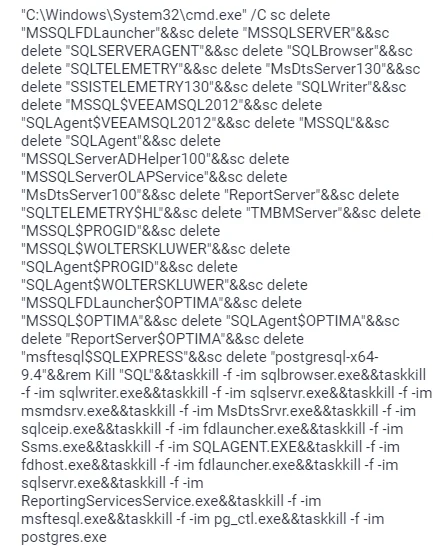
By deleting critical services related to SQL Server and forcefully terminating processes, the ransomware aims to disrupt the normal functioning of the victim’s system (Any.run report)
File Encryption Procedures:
Mallox Ransomware employs advanced encryption techniques to render files inaccessible and demand ransom for decryption: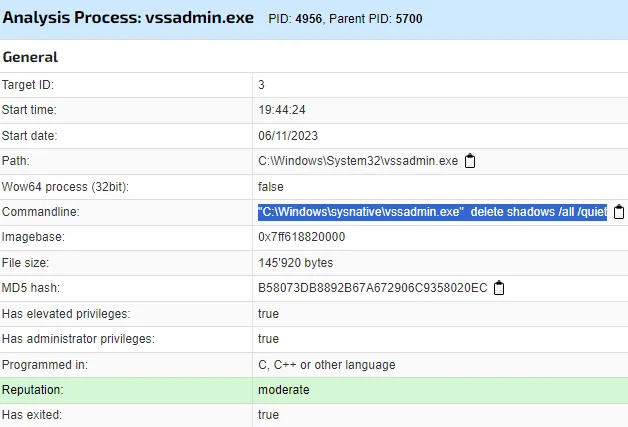
Shadow copies are backups created by Windows to allow users to restore previous versions of files. By deleting these shadow copies, Mallox tries to prevent users from using built-in recovery options to restore their encrypted files. (JoeSandbox)
Ransom Note Delivery:
After encrypting files, Mallox delivers ransom notes to inform victims of the encryption and provide instructions for ransom payment:
Mallox drops countless HOW TO BACK FILES.txt (Any.run report)
Ransom Payment Infrastructure:
Mallox establishes a ransom payment infrastructure to facilitate communication and payment processing with victims: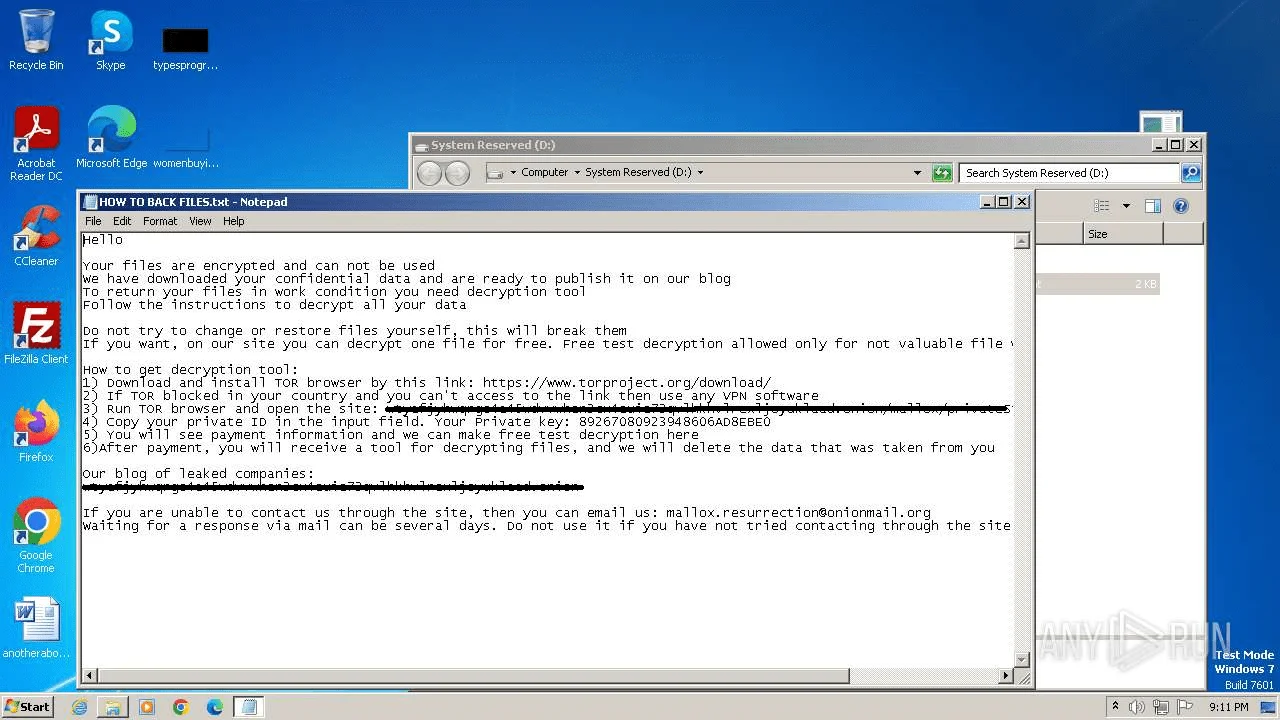
Ransom note delivery, victims are also instructed to install TOR to access their data leak site (Any.run report)
These steps illustrate the systematic and sophisticated approach employed by Mallox Ransomware throughout its attack lifecycle, from initial access to ransom payment facilitation.
There are only 42 victims on the currently live leak site of Mallox, which has victims from almost all over the world over the years. These countries in the graph below are portrayed in parallel with their targeting intensity but only according to Mallox’s latest leak site’s index.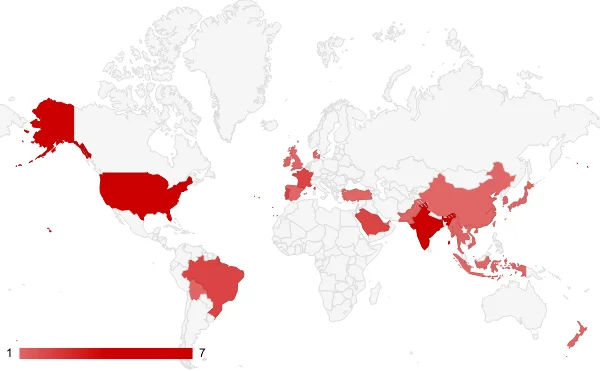
Targeted countries by Mallox as indexed by their data leak site
Mallox, whose hundreds of attacks have been reported over the years, continues to be a detected strain, although it is not as active as before. However, it seems to be one of the candidate groups to fill the gap in the ransomware landscape, especially after the operations carried out against large ransomware operators.
Even though it is certain that there are Russian hackers among the members of the group, we are not sure about calling the group completely Russia-based. Although former USSR countries are not targeted, unlike typical Russian-based ransomware, there is an attack targeting China.
Latest uploaded sample make contact with a Russia-based IP address (JoeSandbox)
Iran is not among the targets, although the group has intensive operations in the Middle East. Therefore, we can say that they are probably a Russia-based ransomware, but there are minor doubts.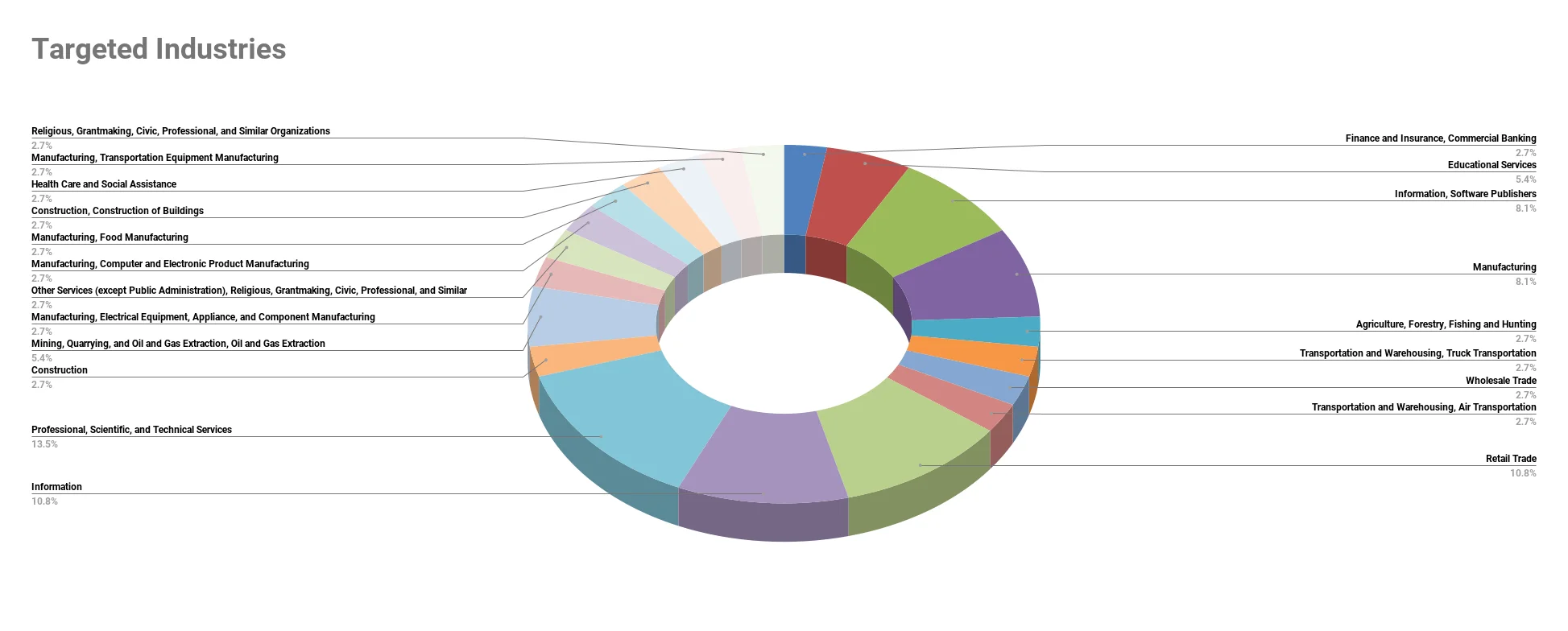
Indexed victim’s associated industries
There is no definitive target for Mallox ransomware, which has victims in almost every sector, but Professional, Scientific and Technical Services, Information, and Retail Trade appear to be the main targeted sectors.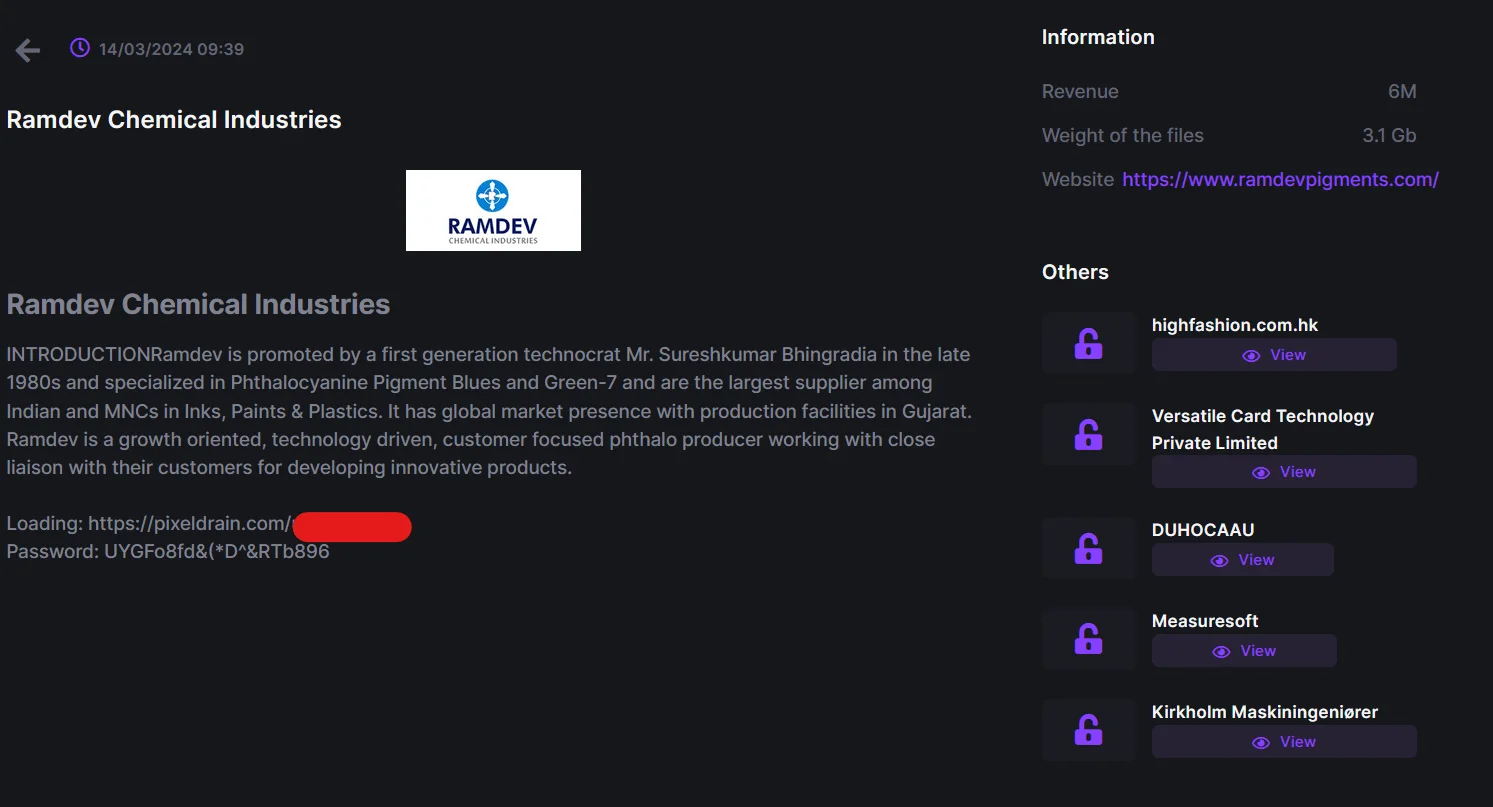
A recent victim listing by Mallox
When you enter an indexed victim’s page on their data leak site, a text introducing the company, revenue, and the size of the leak is written. They upload data leaks to file sharing sites accessible on the clear web. In this example, pixeldrain[.]com is used and the password to access the file is given.![]()
Uploaded file on pixeldrain[.]com
The uploaded file was viewed only 29 times and downloaded 6 times. While this number rises to thousands even in ransomware groups whose impact is thought to be much smaller, Mallox’s leak had very little impact. While the uploaded file is claimed to be 3+ GB, the .rar version takes up 2 GB and the file was uploaded to the file sharing website 2 hours before it was uploaded to data leak sites.
By implementing these strategies, organizations can significantly reduce the risk of Mallox ransomware attacks and enhance overall cybersecurity resilience.
SOCRadar presents a formidable defense against the Mallox ransomware threat. Our proactive threat monitoring and intelligence solutions are tailored to enhance your organization’s security stance. With our platform, you can actively track and analyze specific threat actors, gaining deep insights into their tactics, targeted vulnerabilities, affiliations, and indicators of compromise. This proactive approach empowers you to anticipate and counter potential threats effectively, safeguarding your valuable assets.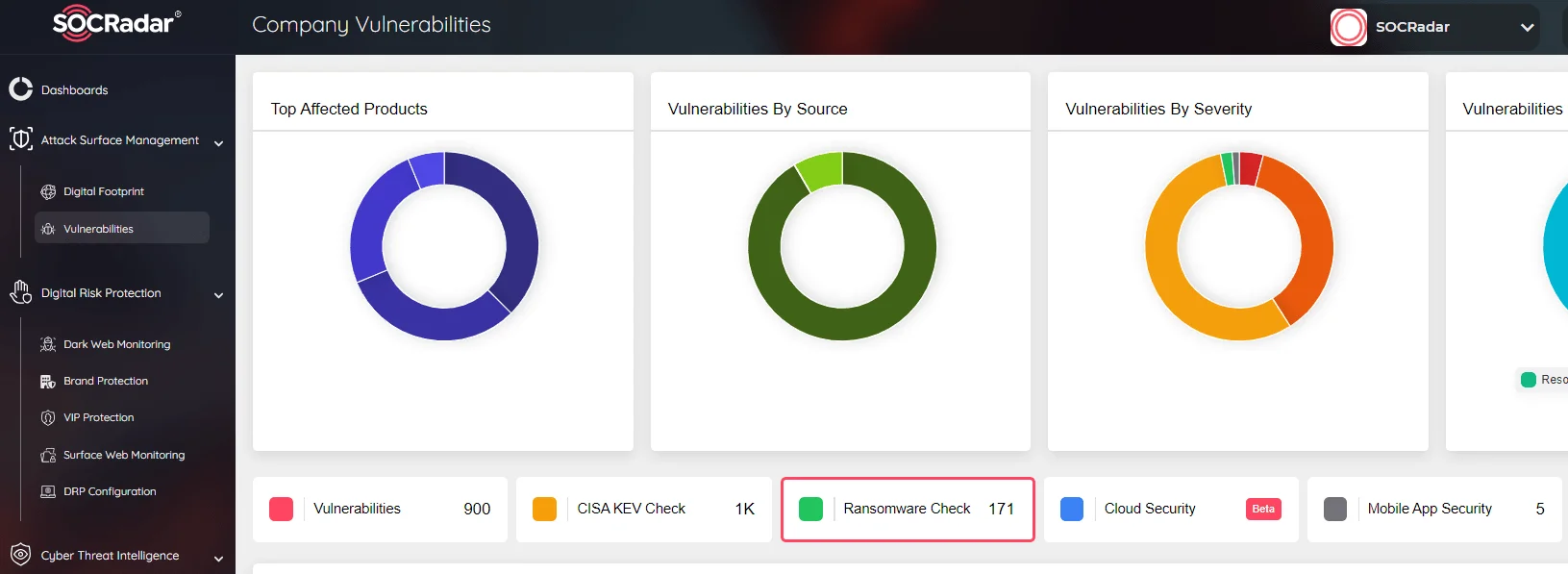
SOCRadar, Attack Surface Management Module with Ransomware Check function
Furthermore, our Attack Surface Management module, equipped with the Ransomware Check function, offers continuous monitoring of all potential attack vectors. This ensures that you receive real-time alerts regarding any suspicious activities related to ransomware. By staying ahead of threats, you can swiftly respond and fortify your cybersecurity defenses, mitigating the risk posed by Mallox ransomware and other emerging threats.
Subscribe to our newsletter and stay updated on the latest insights!
PROTECTION OF PERSONAL DATA COOKIE POLICY FOR THE INTERNET SITE
Protecting your personal data is one of the core principles of our organization, SOCRadar, which operates the internet site (www.socradar.com). This Cookie Usage Policy (“Policy”) explains the types of cookies used and the conditions under which they are used to all website visitors and users.
Cookies are small text files stored on your computer or mobile device by the websites you visit.
Cookies are commonly used to provide you with a personalized experience while using a website, enhance the services offered, and improve your overall browsing experience, contributing to ease of use while navigating a website. If you prefer not to use cookies, you can delete or block them through your browser settings. However, please be aware that this may affect your usage of our website. Unless you change your cookie settings in your browser, we will assume that you accept the use of cookies on this site.
1. WHAT KIND OF DATA IS PROCESSED IN COOKIES?
Cookies on websites collect data related to your browsing and usage preferences on the device you use to visit the site, depending on their type. This data includes information about the pages you access, the services and products you explore, your preferred language choice, and other preferences.
2. WHAT ARE COOKIES AND WHAT ARE THEIR PURPOSES?
Cookies are small text files stored on your device or web server by the websites you visit through your browsers. These small text files, containing your preferred language and other settings, help us remember your preferences on your next visit and assist us in making improvements to our services to enhance your experience on the site. This way, you can have a better and more personalized user experience on your next visit.
The main purposes of using cookies on our Internet Site are as follows:
3. TYPES OF COOKIES USED ON OUR INTERNET SITE 3.1. Session Cookies
Session cookies ensure the smooth operation of the internet site during your visit. They are used for purposes such as ensuring the security and continuity of our sites and your visits. Session cookies are temporary cookies and are deleted when you close your browser; they are not permanent.
3.2. Persistent Cookies
These cookies are used to remember your preferences and are stored on your device through browsers. Persistent cookies remain stored on your device even after you close your browser or restart your computer. These cookies are stored in your browser’s subfolders until deleted from your browser’s settings. Some types of persistent cookies can be used to provide personalized recommendations based on your usage purposes.
With persistent cookies, when you revisit our website with the same device, the website checks if a cookie created by our website exists on your device. If so, it is understood that you have visited the site before, and the content to be presented to you is determined accordingly, offering you a better service.
3.3. Mandatory/Technical Cookies
Mandatory cookies are essential for the proper functioning of the visited internet site. The purpose of these cookies is to provide necessary services by ensuring the operation of the site. For example, they allow access to secure sections of the internet site, use of its features, and navigation.
3.4. Analytical Cookies
These cookies gather information about how the website is used, the frequency and number of visits, and show how visitors navigate to the site. The purpose of using these cookies is to improve the operation of the site, increase its performance, and determine general trend directions. They do not contain data that can identify visitors. For example, they show the number of error messages displayed or the most visited pages.
3.5. Functional Cookies
Functional cookies remember the choices made by visitors within the site and recall them during the next visit. The purpose of these cookies is to provide ease of use to visitors. For example, they prevent the need to re-enter the user’s password on each page visited by the site user.
3.6. Targeting/Advertising Cookies
They measure the effectiveness of advertisements shown to visitors and calculate how many times ads are displayed. The purpose of these cookies is to present personalized advertisements to visitors based on their interests.
Similarly, they determine the specific interests of visitors’ navigation and present appropriate content. For example, they prevent the same advertisement from being shown again to the visitor in a short period.
4. HOW TO MANAGE COOKIE PREFERENCES?
To change your preferences regarding the use of cookies, block or delete cookies, you only need to change your browser settings.
Many browsers offer options to accept or reject cookies, only accept certain types of cookies, or receive notifications from the browser when a website requests to store cookies on your device.
Also, it is possible to delete previously saved cookies from your browser.
If you disable or reject cookies, you may need to manually adjust some preferences, and certain features and services on the website may not work properly as we will not be able to recognize and associate with your account. You can change your browser settings by clicking on the relevant link from the table below.
5. EFFECTIVE DATE OF THE INTERNET SITE PRIVACY POLICY
The Internet Site Privacy Policy is dated The effective date of the Policy will be updated if the entire Policy or specific sections are renewed. The Privacy Policy is published on the Organization’s website (www.socradar.com) and made accessible to relevant individuals upon request.
SOCRadar
Address: 651 N Broad St, Suite 205 Middletown, DE 19709 USA
Phone: +1 (571) 249-4598
Email: [email protected]
Website: www.socradar.com
